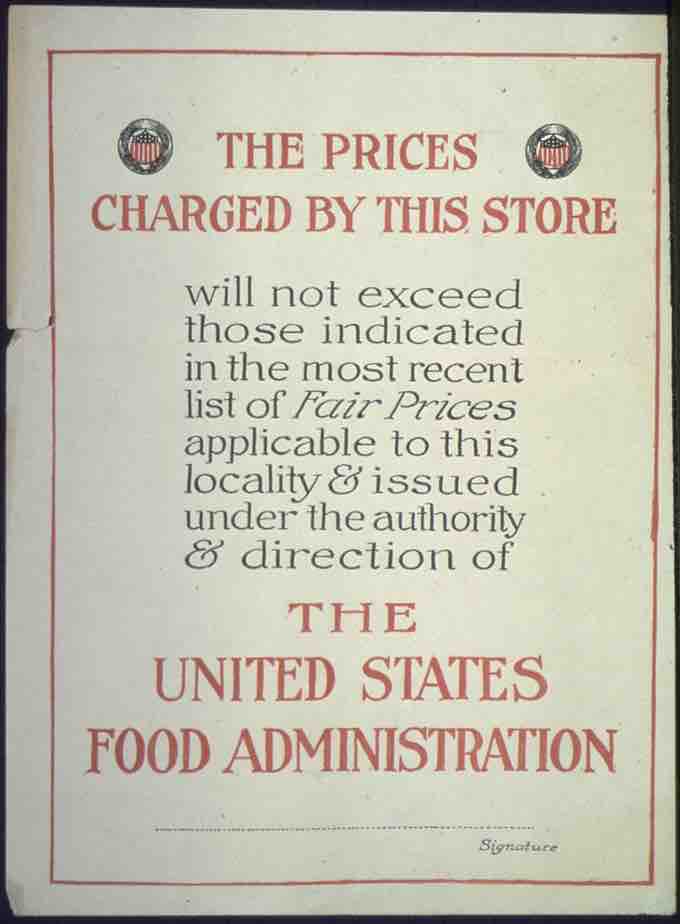When unemployment is especially high or when there is a shortage of goods, it can be difficult for people to get what they need at an affordable price. The main appeal of government imposed price controls is that they can ensure that citizens can purchase what they need in times of national economic hardship .

USFA Depression Price Fixing Poster
During the depression the US government fixed prices on basic staples, such as food, to ensure people would be able to obtain their basic necessities.
Well designed price controls can do three things. First, these regulations can ensure that a basic staple, such as food, remains affordable to most of a country's citizens. Second, regulation can protect the producers of a good and ensure that they get sufficient revenue. This in turn limits the possibility of shortages, which benefits consumer. Finally, when shortages occur, price controls can prevent producers from gouging their customers on price.
Generally price controls are used in combination with other forms of government economic intervention, such as wage controls and other regulatory elements.
While price controls may appear to be a sound decision in theory, most economists believe these controls should be used sparingly. By keeping prices artificially low through price ceilings, consumers demand a higher quantity than producers are willing to supply, leading to a shortage in the controlled product. As Nobel Prize winner Milton Friedman said, "We economists do not know much, but we do know how to create a shortage. If you want to create a shortage of tomatoes, for example, just pass a law that retailers can't sell tomatoes for more than two cents per pound. Instantly you'll have a tomato shortage. "
Price floors often lead to surpluses, which can be just as detrimental as a shortage. One of the best known price floors in the minimum wage, which establishes a base line per hour wage that must be paid for work. As a result, employers hire fewer employees than they would if they could pay workers lower than the minimum wage. As a result the supply of workers is greater than the amount of work, which creates higher unemployment.